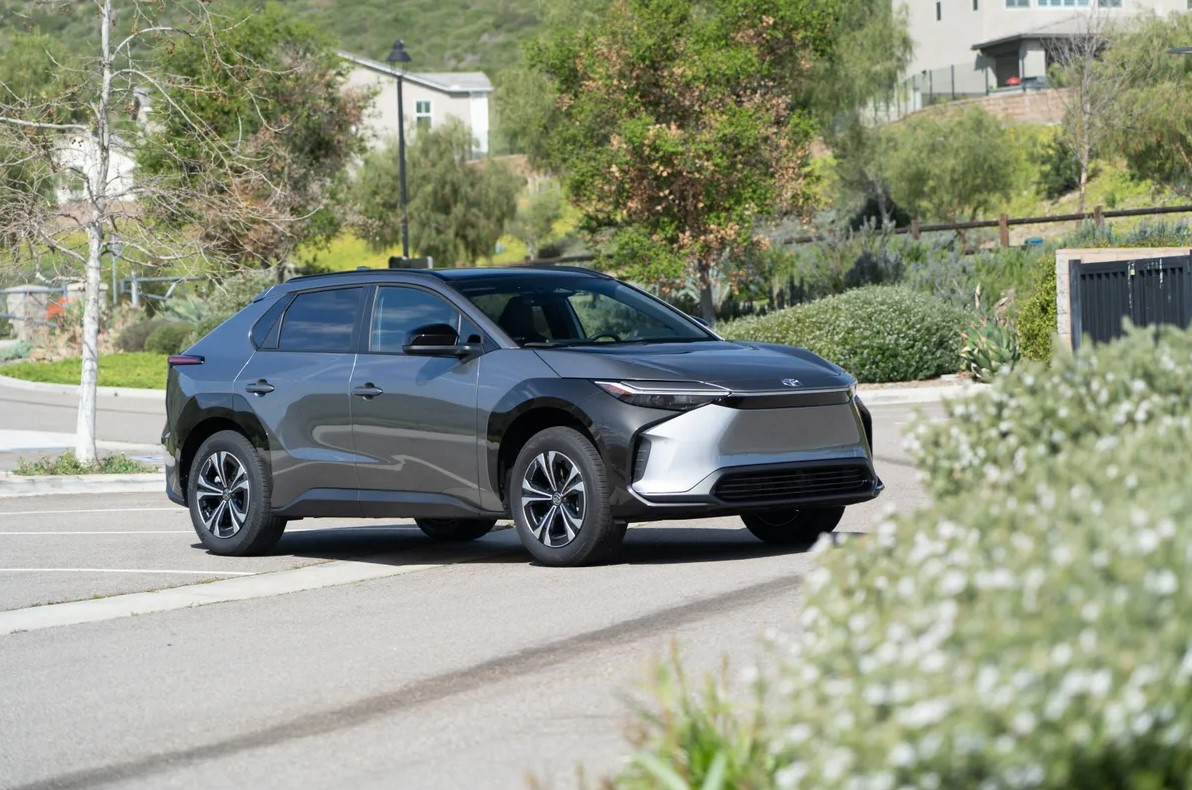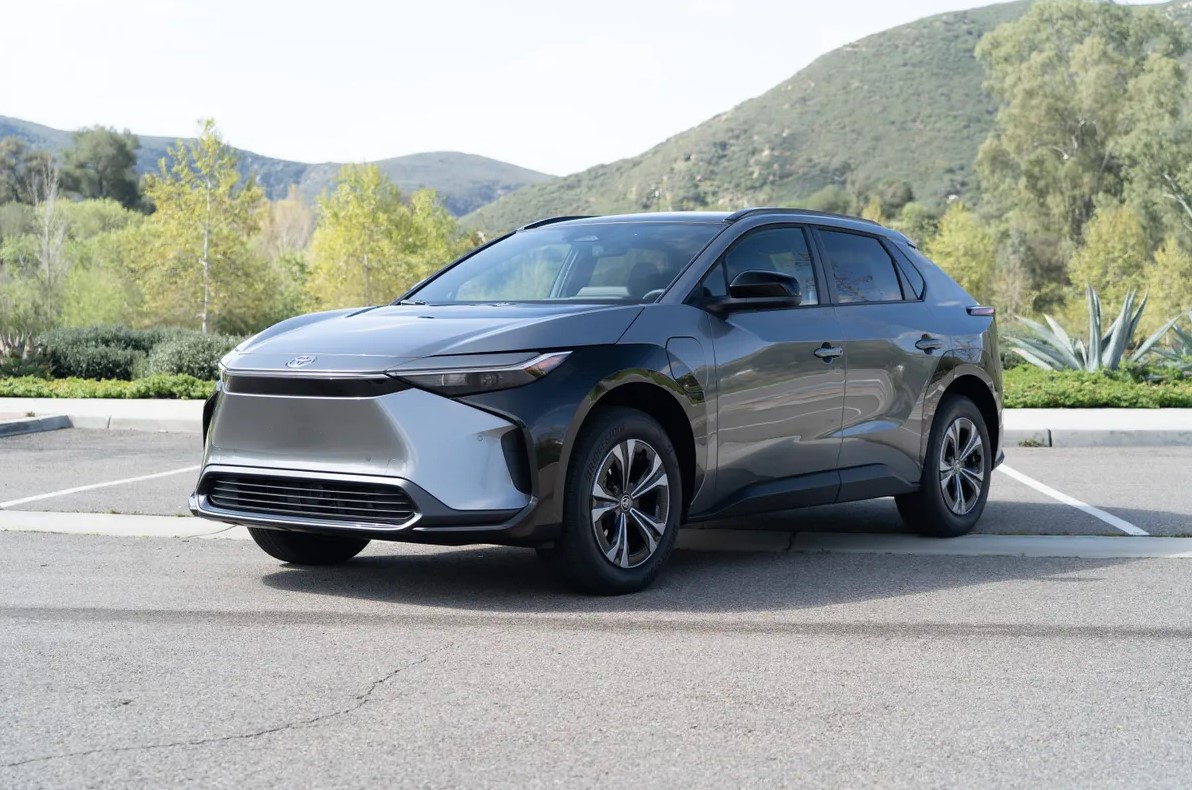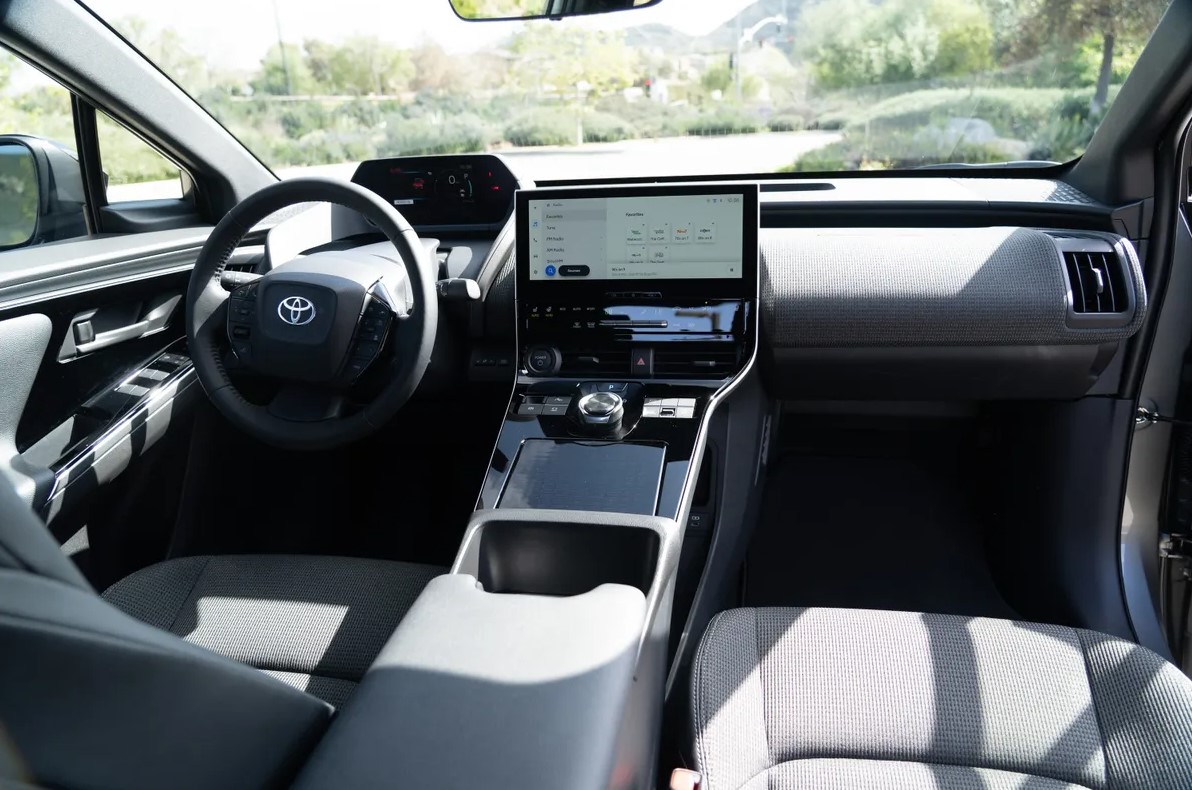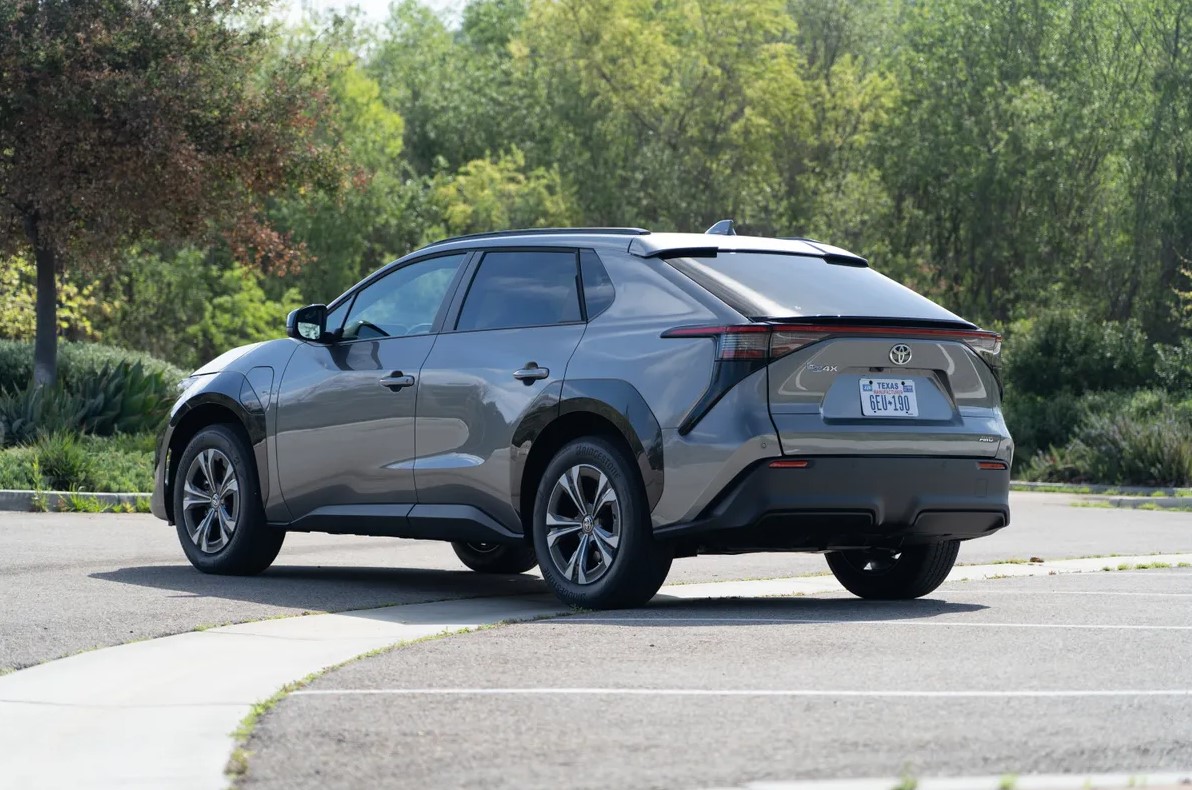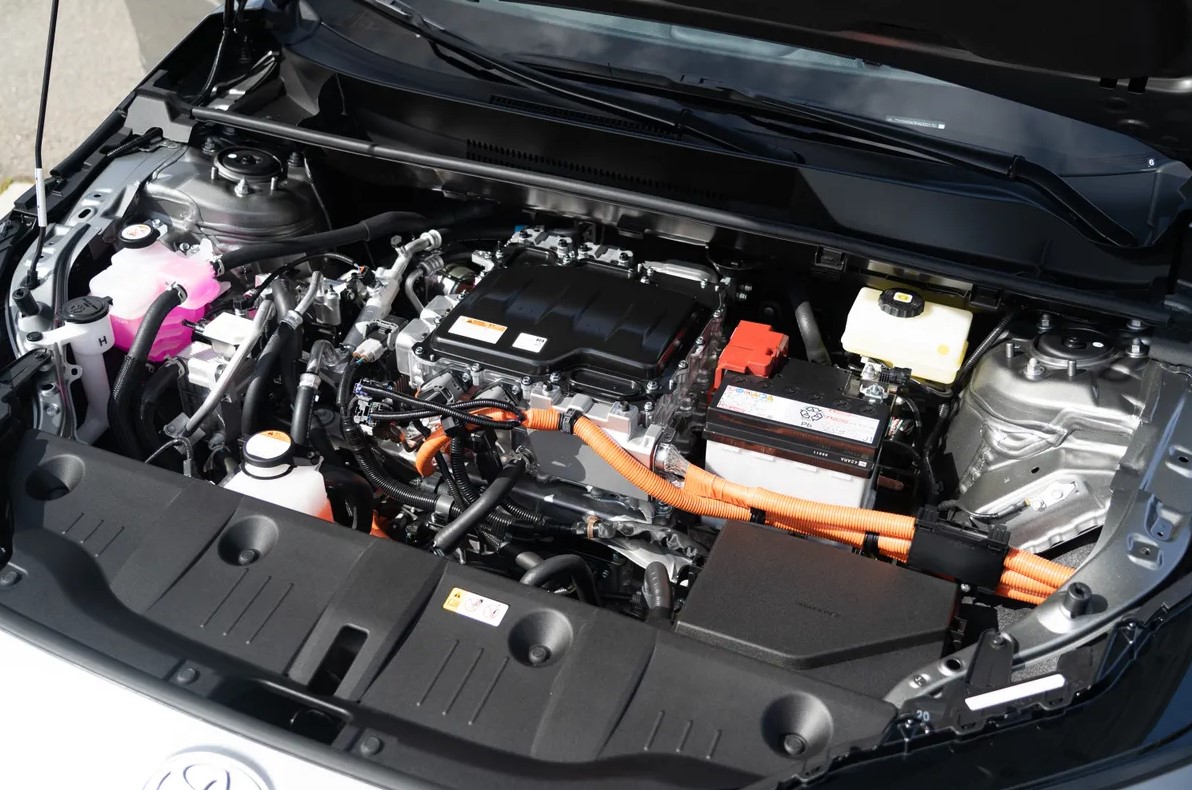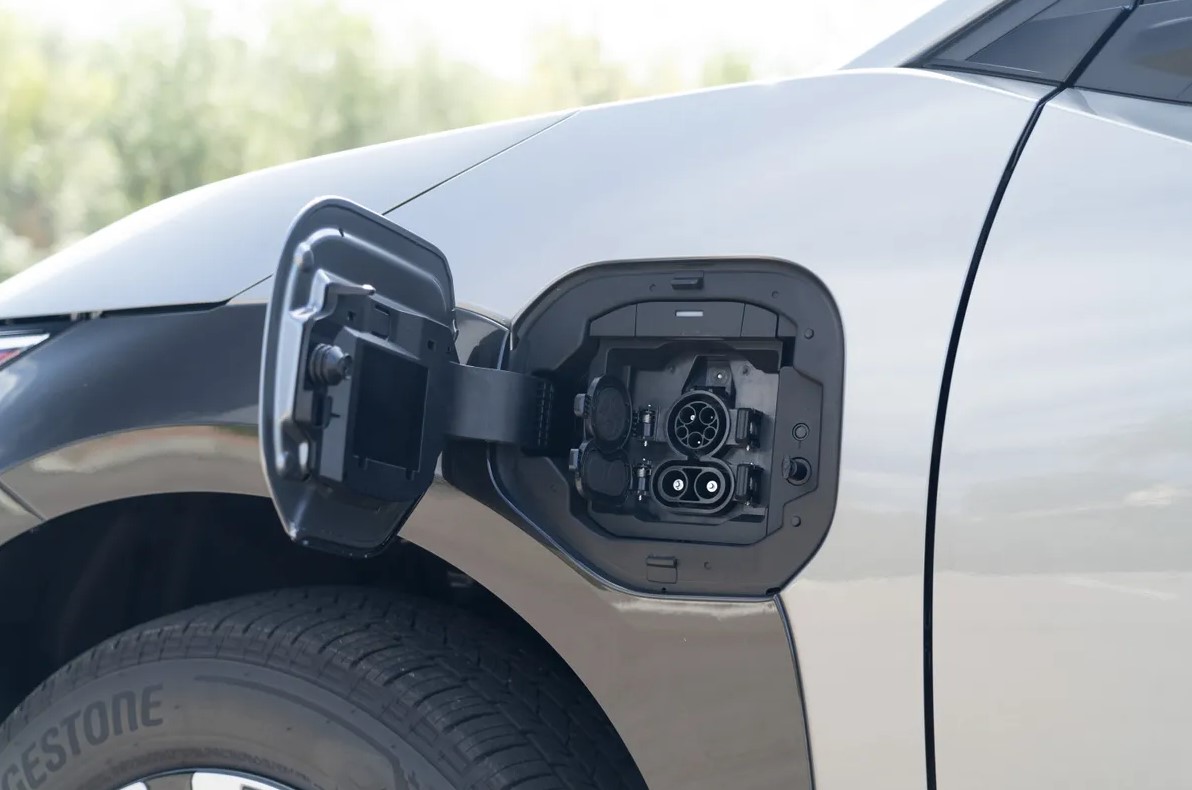2026 Toyota BZ4X Release Date, Specs, MSRP – Even if Toyota’s first 50-state electric SUV is one of the most comfortable in its class, would it be enough in a future where range is essential?
Toyota may seem to be a bit late to the electric vehicle party, but since the 1997 release of the first-generation RAV4 EV and the 2012 release of the second-generation model, the automaker has been testing with EVs in California and Japan. Thus, it makes logical that the company’s first electric car to be offered in all 50 states, the new 2026 Toyota BZ4X, is likewise a compact electric SUV.
The Subaru and Toyota Solterra are technically and aesthetically similar, with the exception of insignia and minor differences in trim level and equipment. The two SUVs will be built in China and Japan as part of this joint venture, sharing assembly lines with the Toyota 86 and Subaru BRZ.
That terrible name is made up of three main parts. Toyota’s current electrification endeavor is referred to as Beyond Zero (BZ). The “4” indicates the vehicle’s size, such as about RAV4-size, whereas the “X” indicates that this is an SUV. If Toyota plans to continue using this naming method, a larger electric SUV may be designated BZ6X, and a sedan might be called BZ4S or something similar, though the automaker won’t comment on the next models. 2026 Toyota BZ4X Release Date,
2026 Toyota BZ4X Redesign and Update Plan
Exterior & Interior
Despite being around the same size, the electric SUV’s wheelbase is 112.2 inches longer than the RAV4’s, which is 6.3 inches longer. Pushing the wheels to the corners of the chassis and having a roof that is 2 inches shorter (65.0 inches) make the BZ4X appear significantly longer than the RAV4, even though it is just 3.7 inches longer overall. Surprisingly, the BZ4X only has a quarter of an inch more ride height than its sibling and retains 8.1 inches of ground clearance.
The car that fits within those specifications is odd-looking but not ugly, with a flat-faced “hammerhead” front end with a huge panel where the grille should be, a design that blends harsh angles and organic curves, and—most controversially—massive, contrasting black fenders.
Upon closer inspection, the design doesn’t really differ much from the RAV4 or Lexus’ NX, especially when paired with a dark color like the Heavy Metal silver in my example, which reduces the contrast between the fenders.
Turn the dial-type shift knob to D, then pound the accelerator and the BZ4X barely above its stipulated parameters. This is because torque is provided instantaneously and linearly rather than progressively increasing power, as is the case with conventional EVs. When driving about town, overtaking, merging, and braking away from traffic signals, the SUV seems faster and more agile than its on-paper numbers indicate.
The crossover has a comfortable ride that is noticeably softer than that of its rivals from Ford and Kia, but it is neither sloppy nor unclear. The squat and dip at launch and braking appear to be well-managed, despite the fact that I saw the body sagging in the turns. At both highway and parking lot speeds, the handling is straightforward and stable, if not a bit numb. It’s a straightforward and comfy commuter, but it’s not the most fun car in its class to drive.
The BZ4X’s 8.1-inch ground clearance may provide it an edge over other low-slung electric crossovers in its class on dirt roads or in inclement weather when paired with the AWD configuration’s X-Mode system, which features traction modes for Snow/Dirt, Snow/Mud, and hill descent control. Although I was unable to test the BZ4X off-road, my colleague was satisfied after some soft-roading in the identical Subaru Solterra.
Another feature of the BZ4X is its user-selectable Boost Mode regenerative braking option, which is similar to but not quite a one-pedal driving mode. When in Boost Mode, which offers complete regeneration on lift, the SUV slows to a crawl but does not stop. Nevertheless, the high-regen option and the X-Mode settings are incompatible, and using one requires deactivating the other.
The BZ4X offers about an inch greater headroom (38.6 inches) and legroom (42.1 inches) than the RAV4 in the first row. However, passengers in the back seat lose around two inches of head and legroom (37.1 and 35.3 inches, respectively) due to the BZ4X’s more steeply slanted roof.
With 27.7 cubic feet behind the seats (or 25.8 cubes with the upgraded JBL audio system’s subwoofer), the RAV4 can carry loads of around 10 cubic feet. (Toyota does not currently provide the folded-flat load capacity of the BZ4X.)
Driving feels weird at first, but you grow accustomed to it. Because the SUV’s 7-inch digital instrument cluster is high and far front on the dashboard, I had to lower the steering wheel relative to my usual driving posture in order to see the gauges above the rim rather than through it.
However, after just a few miles, I began to appreciate and even love this more ergonomic stance, which significantly reduced wrist pain after a long day of driving and enhanced forward visibility. Meanwhile, the BZ4X’s cabin looks great because of its high-quality materials and sleek, uncomplicated design.
Unfortunately, the pickup’s big volume knob is absent from the BZ4X, which only has modest volume controls. The 12.3-inch Toyota Audio Multimedia system with “Hey Toyota” hot-word recognition, which was initially included on the new Tundra, serves as the primary infotainment display. In general, this menu system is organized and responsive. However, there may be areas where the user interface is quite basic, making it easy to overlook some frequently used features.
Apple CarPlay and Android Auto are standard via WiFi networking or the single USB Type-A media port in the center console. (The four additional USB Type-C charging ports are split between the front and rear seat passengers.) In addition to integrating Alexa and Google Assistant with digital assistants and smart homes, the Toyota Remote Connect telematics service is subscription-based after a free three-year trial.
Digital keys, remote charge monitoring, and other functions are also included. 2026 Toyota BZ4X Release Date,
2026 Toyota BZ4X Specs
Engine & Performance
The main difference between the 2026 BZ4X and its Pleiades-branded sibling is that the Toyota is available with both front-wheel drive and all-wheel drive, while the Subaru is only available with all-wheel drive.
The front-drive system uses a 150-kilowatt electric motor on the front axle in conjunction with a 71.4-kWh battery pack to provide 201 horsepower and 196 pound-feet of torque. With the extra amenities of the Limited standard, you may expect a range of 242 miles, or up to 252 miles in the lighter XLE version of the BZ4X. For heavy-footed drivers, the 0- to-60 mph pace is a respectable 7.1 seconds.
The 80-kW engine on each axle of the all-wheel-drive BZ4X generates 214 horsepower and 248 lb-ft of torque. Range also drops to 222 miles for Limited grades and 228 miles for XLE grades, however sprints from 0 to 60 mph are shortened to 6.5 seconds. Surprisingly, this design makes use of a separate 72.8-kWh battery pack. Toyota chose a different supplier with a slightly different chemistry for this arrangement, which is why there is a 1.4-kWh disparity.
The BZ4X will, of course, be contrasted with the Kia EV6, which travels for 310 miles in its rear-wheel-drive version and 274 miles in its all-wheel-drive version when equipped with a similarly sized “long-range” battery pack. VW’s ID 4 can go 280 miles, whereas the more expensive Tesla Model Y can travel 318 miles in its Long Range model. In a world where range is crucial, the Toyota fares horribly.
2026 Toyota BZ4X Fuel Economy
Furthermore, there are differences in the two battery packs’ peak DC fast-charging speeds. The 71.4-kWh pack can reach up to 150 kW, whereas the 72.8-kWh pack can only reach 100 kWh. In any event, owners may anticipate utilizing the CCS connection to fast-charge from 20% to 80% at a strong enough station in around an hour. In as little as 20 minutes, the 350-kW capable Ioniq 5 and EV6 complete the process, which is equivalent to the VW ID 4 and Mustang Mach-E.
Assuming that Level 2 charging stations will manage the majority of charging, Toyota seems to be OK with this. Free EVgo public charging, linked to the Toyota App, is included with the BZ4X for a year.
To help them start charging at home, owners may now buy a Chargepoint Home Flex Level 2 charger directly from the dealership. One of these 240-volt AC outlets can accommodate up to 6.6 kW, giving the BZ4X a maximum range of around 25 miles per hour. Because of its nonlinear battery charging rates, it can fill up completely in about 11 hours.
2026 Toyota BZ4X Safety Features
The Toyota Safety Sense 3.0 driver aid tech suite, which comes standard on all BZ4X cars, features rolling in precollision alert, guardrail recognition, and braking help for cyclists, motorcyclists, and pedestrians.
It also has standard lane-centering steering assistance, adaptive cruise control that works in stop-and-go traffic, and automatic high lights. The standard blind-spot monitoring system has been enhanced with Safe Exit Assist, a feature that alerts passengers when they open a door into oncoming traffic. 2026 Toyota BZ4X Release Date,
2026 Toyota BZ4X Release Date & Price
Before any state or federal EV tax incentives, the base price of the 2026 Toyota BZ4X single-motor XLE model, including the $1,215, is $43,215. Add $2,080 for all-wheel drive with two motors.
The Limited grade, which starts at $47,915 for one motor or $49,995 for two, has a 360-degree camera system in place of the standard rear camera. It also has multi-LED headlamps, a power lift gate, eight-way power adjustment on the SofTex synthetic leather seats, heated and ventilated surfaces, and a heated steering wheel.
The 2026 Toyota BZ4X is a respectable vehicle. Its good build quality, pricing, and moderate performance satisfied me, as did its ergonomics and smooth ride.
Unfortunately, for now, six vehicles in this class of compact electric SUVs—the Tesla Model Y, Kia’s EV6, Hyundai Ioniq 5, Ford Mustang Mach-E, and Volkswagen ID 4—offer better technology, faster charging, a longer range, or all three.
Note: The details included in this blog post are derived from pre-release material that was accessible when the article was written. If you want the latest information, you should check official sources or call your nearest dealership.
Read Also:
- 2026 Toyota Prius Prime Redesign, Price, Specs
- 2026 Toyota Crown Signia Review, Specs, Fuel Economy
- 2026 Toyota Sequoia Review, Specs, Performance
- 2026 Toyota Tacoma Review, Specs, Redesign
- 2026 Toyota Celica Specs, Redesign, Price
